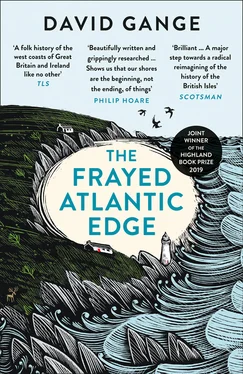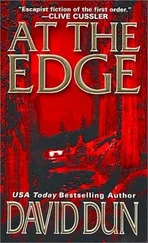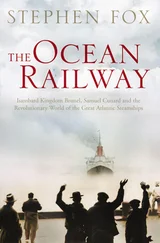1 ...8 9 10 12 13 14 ...21 Mist is an excellent ally in wildlife watching. Today, not much after 4 a.m., an otter stood and watched as I drifted quietly by, while several red-throated divers, known here as rain geese, left it late to sidle off. Conditions, landscape, wildlife and atmosphere had all changed dramatically since St Magnus Bay. After landing and stocking up on water I set off for Havera, a place I’d long been intrigued to see. Slowly, the mist rose, wisps clinging to the moors east of the island, so that Havera gradually brightened from the west. Soon, it was stranded in a wedge of weak light beneath dark and silent skies. Clouds still licked the feet of the rough pewter cliffs long after their brows were clear. As I entered the mile of open water between mainland and the island, the swell was slow and gentle. On this day more than any other, the strange sensation of movement in multiple dimensions was something my body would retain: when I slept, many hours later, the cliffs seemed to undulate beneath me.
Havera is surrounded by richness. Nories and tysties surfaced laden with sand eels; forests of green-brown kelp seemed to grasp towards the surface. I’d planned this day and the next to give me time on the island. Here, if anywhere, I could begin to comprehend the lost communities of Shetland and the ruins that line the shores. The Havera folk left behind an archive, including recordings describing life on the island. A collaborative project of photography, research and writing used these to build a beautiful book, Havera: The Story of an Island (2013). I’d saved this to read in situ , where I could follow up each reference to a hill, promontory ( taing ) or rocky inlet ( geo ) by exploring it myself. Later, I’d spend a day on the Shetland mainland listening to recordings of the people of Havera and contextualising the extracts in the book. This was my best chance so far to explore the ‘archive of the feet’.
Travelling south, I reached the island at the deep clefts of Stourli Geo and Brei Geo on its north side, and used a dialect poem, Christina de Luca’s ‘Mappin Havera’, to guide me towards a landing. This poem begins with a warning:
Havera’s aa namit fae da sea.
We could box da compass
o wir isle; hits names markin
ivery sklent da sea is med,
da taings an stacks an gyos.
If on your wye ta Havera
an mist rowled in,
ivery steekit bicht spelt danger;
you had ta ken dem, ivery een. 14
The poem then provides the necessary ‘kenning’, tracing the aids and obstacles encountered by fishermen at the island’s edge, until spying safety at ‘Nort Ham,/wir peerie haven /Mak for dere if you can’.
Having followed these directions, I pulled into Nort Ham at the island’s south-east corner (figure 2.6) and was met with an onshore sea of wildflowers and grasses. I pulled my boat up among the buttercups, where I found the egg of a wheatear ( sten-shakker ), plundered by a neater and more precise predator than the bonxies who might ordinarily be culprits. But there were also sten-shakker fledglings, less cautious and more curious than their chattering parents. Without this pretty sheltered inlet at Nort Ham, Havera might never have been inhabited. Over centuries, the people and goods that entered or left the island came through this tiny gap: the community’s single link to the world beyond.
I packed myself a bag of food and warm clothes, since new weather seemed to blow in by the hour. Havera has several landmarks I wanted to investigate. The most substantial is the abandoned village packed tightly into the corner known as Da Yard, which was the last place in Shetland’s small isles to sustain a population. In 1911 it boasted twenty-nine occupants from five families. Inland, there are two outlying buildings. One is an old schoolhouse, the other the imposing trunk of a huge ruined windmill: a meed (sea mark) visible from many miles away. I decided to take my bearings according to the landscape before investigating the ruins. This proved trickier than expected since most headlands were colonies of terns: to disturb them is not just harmful to a threatened species, but also draws a volley of intense and committed dive-bombing far more likely to cause injury than the infamous attacks of great skuas (a bonxie attack is never conducted in such numbers or with such frenzied persistence).
When I finally found a spot to sit and read, I was gazing out onto Havera’s satellite, West Skerry. Each spring, island sheep and cattle were swum here, across the hundred-yard sound, to protect the Havera crops. This ridge of rough pasture, completely separate from Havera’s arable land, was key to the success of the island community. But it is arable richness that was Havera’s greatest asset. The island is less than a square mile in size, yet its interior is not the rock- and wrack-strewn waste found on many islets of similar area. It’s an unlikely idyll of well-drained, fertile earth, perpetually replenished by soft limestone that intrudes in veins through the region’s granite bones. From the era of Neolithic field boundaries (still sometimes traceable), to the moment when the crofters left, this limestone made Havera a fine place to grow grain. Indeed, its name is probably derived from hafr , the Old Norse for ‘oats’.
The island was generally presented by its last inhabitants as a plentiful and perfect home. Gideon Williamson died in 1999, seventy-six years after he left Havera; he remembered his birthplace as unique in Shetland because its fertile land was not ‘just bits a patches here an dere’ but one great expanse of rock-less, weed-less loam: ‘you could tak a ploo an ploo da whole lot up … Hit wis entirely clean.’ Shetland tradition accords to tilled Havera earth pest-repelling tendencies that verge on the magical.
Yet the topography did have drawbacks. Wells were no substitute for streams because running water had uses beyond cleaning and quenching thirst. The most common ruins I’d passed along other Shetland coasts were small, simple watermills built where rivers met the sea. But the people of Havera had to row their grain to Scalloway (a five-mile crossing) or Weisdale (eight miles) and pay for its grinding. This added labour, cost and risk to the challenges of island life. In the 1860s, a solution was dreamed up: the only windmill ever built in this storm-ravaged archipelago. The innovator might have been Gifford Laurenson, a skilled mason who was entrusted by the Society of Antiquaries with repairing the Iron Age Broch of Mousa (then ‘mouldering into dust’). Between 1848–52, the Laurensons married into Havera families twice, and Gifford’s sister and father (also a mason) moved to the island.
The significance of Gifford Laurenson’s link to the Broch of Mousa is that the Havera mill evokes ancient Shetland more than modern. It stands like a round Iron Age edifice in a region where circular buildings are rare. It is a landmark that, like an ancient fort, puts Havera on the map: the most instantly recognisable of the small islands and, according to one local seafarer, ‘a kinda lodestar for whaar you wir’. That incidental function is all well and good. But so many compromises were made with the mill’s design, in order that it might withstand the Shetland weather, that it was useless for grinding grain: Havera folk quickly quit and resumed their mainland journeys.
The large, ill-fitting stones make the mill easy to climb, so I edged my way carefully up the green and golden lichen to an exceptional vantage on its walls. From here the world of which Havera was the centre could be surveyed. The rough low hills of the southern mainland, with their scattering of small white houses, occupied the eastern horizon, the shores becoming ever sandier as the hills sank and stretched south. These were the coastlines that Havera folk traversed on calm summer days. But beyond the southern extremities of the mainland, thirty miles distant, Fair Isle stood out on the horizon. From there, sweeping west, a long stretch of ocean was punctured only by the mad cliffs of Foula, frequently referred to as the wildest inhabited spot in the British Isles. These two islands signalled a remoter world to which, in certain weathers, Havera most certainly belonged.
Читать дальше












